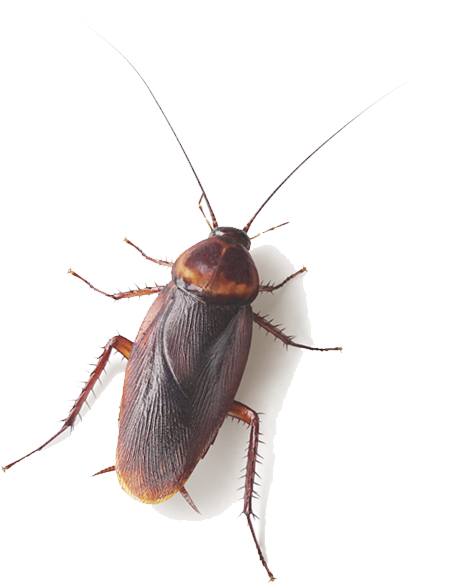Aged Care Pest Control Melbourne
When working in aged care you establish a contract with your clients. Not just a physical contract outlining your duties to your clients, but a mental and emotional one too, and pest control for aged care is just one of many needs.
When you take on new residents you become directly responsible for their mental and physical well-being. It’s up to you to ensure that they’re not only fed and watered but that they’re happy. After all, these are people you’re dealing with, and people have needs.
Think about how you might feel if you found out that someone you trusted to look after your loved one had left them in a pest-infested hovel. You probably wouldn’t be too happy, would you? So why do it to someone else?
Call Pestline on 1300 361 646 now for all your aged care pest control needs!
Pestline Pest Control for Aged Care
In 2020 a Royal Commission into Aged Care Quality and Safety indicated that complaints relating to the physical conditions of facilities including pest infestations, were more common in for-profit-run facilities, while almost non-existent in government-run facilities.
Pest control is essential in every industry, but aside from customer-centric industries like restaurants and hospitals, it’s probably never more important than aged care pest control. These facilities care for dozens, if not hundreds of residents who require assisted living and fast medical attention. The same applies to medical pest control inside hospitals and medical centres. Many of these residents have weakened immune systems or chronic illnesses that leave them more susceptible to infection or disease. These diseases can be spread by a myriad of pests, from flea infestations to rats, so when evidence of an infestation is present, not only is it a sign of negligence but it represents a betrayal of the client’s trust.
Pestline Services
When it comes to the living conditions of your client’s loved ones, you can’t afford to engage with the second best. Pestline is a Melbourne pest control company, boasting only the highest quality service and a strictly “handle with extreme prejudice” approach to aged care pest control, you’re guaranteed to go from infestation to sanctuary.
We don’t specialise, we can handle anything you throw at us. Whether a residential or commercial space, a single nest of bugs or a fully blown-out invasion, Pestline has you covered.
What makes us different is our all-round approach to pest control for aged care. When Pestline gets a job, we not only clear out the existing problem but also put measures in place designed to prevent the return or proliferation of pests from the existing colony that might have evaded capture or extermination. We also put in guards against new pests that may deem the freshly-cleared environment a prime new habitat free of competition.
We are one of the most trusted pest control services in Melbourne, and have satisfied customers across a variety of industries, including cafes, travel, education, production, and (you guessed it) aged care!
Common Aged Care Pests
Bug and pest species are some of the most adaptable in the world. It is estimated that insects alone make up around 75% of the world’s known fauna species. A number that is more impressive when you factor into consideration that 86% of the animal species in the world are still unaccounted for. This means that there could be millions upon millions more bugs out there than we’ve discovered.
We tell you this so that you understand how massive undertaking pest control in aged care is. And this is without factoring rodent species, and the bacteria they carry!
Despite this massive undertaking, there are a few pest species more likely to take root in an aged care facility than others. Here are a few common interlopers, and how to identify their presence:
Bed Bugs (Cimex lectularius)
Bed bugs are common insects and almost imperceptible. At a tiny 5mm long these small, flat, ovular insects are brown and feed on blood throughout their lifetime, even though they can live for up to a year without food. They typically live in dark spots around your bed mattress seams, clothing, furniture, manchester, and luggage. While they will feed on anything warm-blooded, they have a particular proclivity for humans, likely due to our inactivity at night, rendering us vulnerable to their nocturnal feeding habits. Residents in aged care can be particularly vulnerable to this, due to limited mobility and increased need for rest. Signs of bed bugs include:
- Regularly waking up with bites that cause red itchy spots.
- Organisms crawling on the mattress, bed frame, and other furniture.
- Brown spots (faecal matter)
- Blood spots.
- Large infestations can sometimes cause a stench that is musty and sweet.
Cockroaches (Periplaneta australasiae)
The Australian Cockroach is the most common our clients in the aged care industry face. They are brown, with a yellow line around the head. Although frequently confused with American cockroaches the Australian clade is smaller, only being between 23-35 mm long. A nocturnal species, the Australian cockroach usually hides in dark, damp areas with good access to water. Signs of infestation include:
- Presence of nymphs (juveniles).
- Presence of an adult.
- Egg cases.
Droppings (dark spots or smears). - A musty odour (this will be stronger the more cockroaches there are).
Rodents (Mus musculus/Rattus norvegicus)
Wild rodents, while cute (by some), aren’t conducive to a healthy atmosphere. The house mouse (mus musculus) and the brown rat (Rattus norvegicus) are two of Australia’s most common rodent species, and are frequently at the heart of rodent infestations in aged care. Although both species have been widely domesticated and are popular household pets, the wild variations of these animals can carry various diseases, cause structural and electrical damage, and infect food stores. Rodent infestations can be identified through the following:
- Droppings around good packages, drawers, cupboards, and under sinks.
- Nesting material like shredded paper, fabric, and dried plants.
- Evidence of chewing on food packages.
- Holes in walls create entry points into the home.
- Stale smells from hidden areas.
Mosquitoes (Culicidae culicinae)
Mosquitoes are some of the most irritating, and dangerous insects to have an infestation of in aged care facilities. These blood-feeding bugs are well-known parasites, infamous for disturbing sleep with the high-pitched, whining drone of their wings as they hover above us at night trying to feed on our blood. Although their bites do result in swollen, itchy growths, mosquitoes are some of the world’s most effective carriers of disease, often forcing blood-to-blood contact through their feeding on unwitting hosts. Signs of an infestation include:
- Increased adult numbers (please pay attention to residents who say they’ve noticed more mosquitoes).
- Stale water with growing larvae.
- Frequent buzzing noises.
- Multiple, consistent bites.
Houseflies (Musca domestica)
The housefly is the most common fly species in the world and is also the most underestimated. Usually thought of as little else than a minor annoyance or a barbecue parasite, the housefly is a persistent disease-spreading threat that can seriously affect those living in aged care. Signs include:
- Large numbers of flies.
- Frequent spotting of flies.
- The presence of several dead organisms.
- Clusters around light fixtures, gutters, mulch piles, and bins.
Why Pestline for Aged Care Pest Control?
We’re singularly dedicated to keeping aged care facilities clear of pests. Melbourne is a beautiful city, but it also has a lot of pests, and these pests can frequently harm what is most important to us. To this end, Pestline has dedicated itself to being the best pest control for aged care in Melbourne you can trust.
We are recognised for our high-quality work and long-term solutions to infestations. We also characterise ourselves through the use of environmentally friendly chemicals, keeping our home, loved ones, and country safe.
If you would like more information, feel free to contact us here, or call us on 1300 361 646. Otherwise, you can fill in the form now for a free, no-obligation quote.


